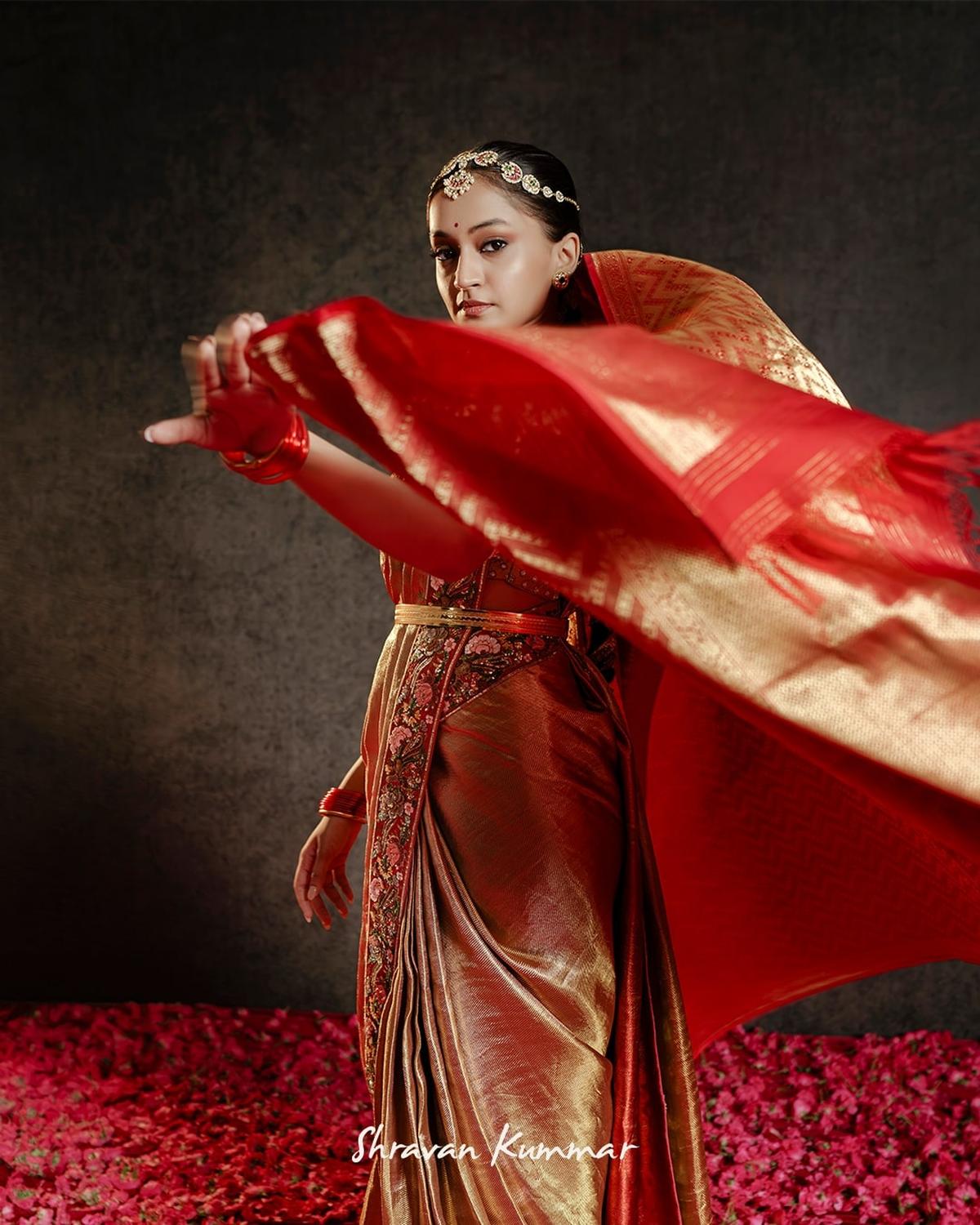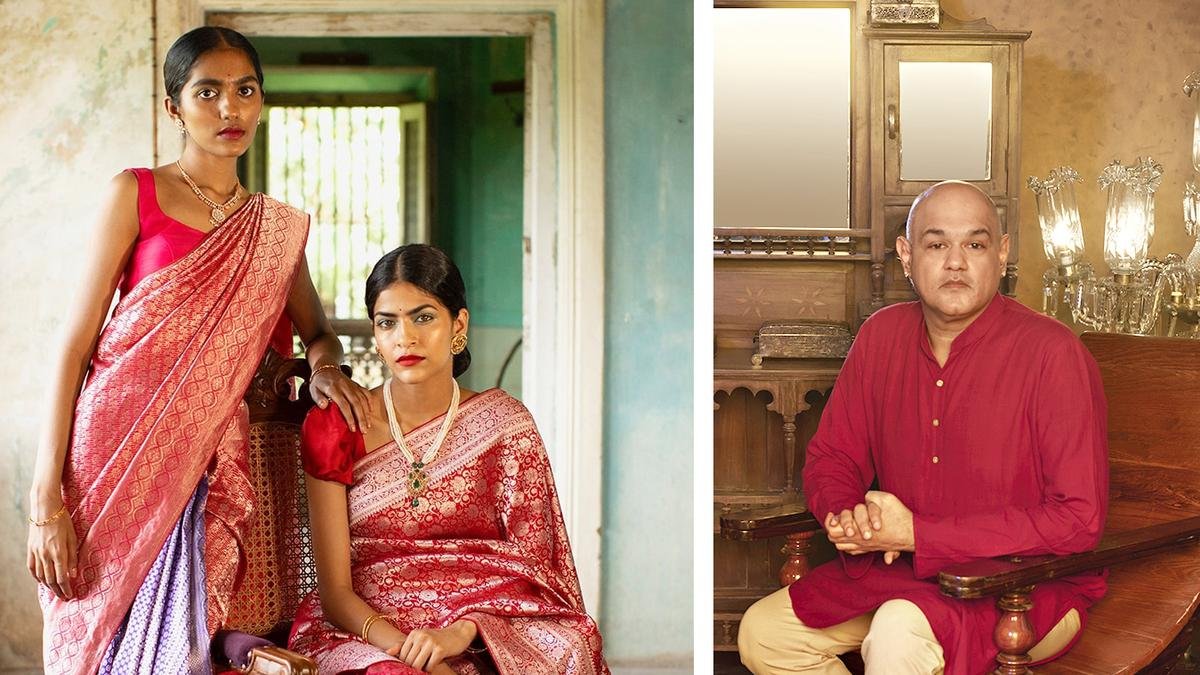
Models showcase saris by Shravan Kummar; the designer
| Photo Credit: Special Arrangement
Revivalist is a term that’s loosely thrown around in the fashion circuit, in a bid to add credence to designers who focus on time-tested weaves and crafts. At Hyderabad-based designer Shravan Kummar’s studio, the focus on crafts has been an ongoing process for nearly three decades. He courts the limelight occasionally, showcasing handloom saris and ensembles at key events across India. He prefers to be reticent at other times, and the clientele that he’s built over the years seeks him out for saris and occasion wear.
Ahead of the festive season, his studio tucked away at one portion of Hotel Abode in Lakdikapul is abuzz. A mother-daughter duo wants saris for the festive and wedding season, and another bride-to-be is on a call with a younger designer at the studio to finalise embellishments for a Kanjeevaram sari.
“I can confidently say that our silk saris can last 120 years. We do not take short cuts. The weave is authentic, be it Kanjeevaram, Benares, Venkatagiri, Mangalagiri, or Paithani,” says Shravan. He liaises with weaver clusters across India and is game to show some of the saris that bring back forgotten motifs.

Shravan liaises with weavers of Kanchi, Benares and other clusters
| Photo Credit:
Special Arrangement
An ivory white Paithani cotton sari reserves all its drama for the pallu that has woven images of the navagrahas. “Two weavers worked on this for 19 months,” Shravan explains. A younger designer at the studio points out that the preparation involved spending ample time on drafting the designs of each motif.

Kanjeevaram and Benarasi saris with vintage-era motifs occupy the pride of place at the studio. There are also saris in mulberry silks, and silks from Assam, Meghalaya, Bengaluru and Gujarat. “Our weavers use fine count threads for cottons, silks and khadi, which makes the saris softer and easy to drape. A hallmark of several saris worn by our ancestors was the ease with which they could be draped,” says Shravan.
The motifs on the Kanjeevarams are inspired by the temples of Tamil Nadu. Apart from peacocks, birds and elephants, Shravan shows a sari that has motifs from the Kamakshi, Meenakshi and Visalakshi temples. In other saris, pomegranates and flying lotuses are strategically placed. “The annapakshi (swan) motifs have been done to death. Instead, we work on the Tree of Life, two-faced lions, and sugarcane motifs reflecting the mood of the harvest festival.”

Shravan also shows Benarasi saris with bel motifs that are a throwback to the fashion of the 1940s and 1950s. “We have applied for patents for some of the unique designs,” he says, adding that the Benarasi and Kanjeeveram saris come with a note of authenticity for the silver and gold zari that could weight from 7.5 grams to 13 grams for each sari.
With longevity as a focal point, several saris come with the option of two blouses. “This helps when a sari is shared between a mother and daughter or siblings,” he states.
The revival extends to Venkatagiri and Mangalagiri silk and cottons, Mysore silks, khadi-cottons and khadi-linens in fine count threads to ensure softer drapes.
Shravan, who took to designing in 1996, accompanied by his sister Jyothi Jaisoorya, asserts that with time, his focus is on one-of-its-kind saris. “When motifs are used on more than one sari, there is variation in size, placement and combination to ensure that each sari is different.”
Published – September 26, 2025 04:44 pm IST
